March 2022
What is Souvlaki?
I think that most of us are aware that it’s of Greek origin. Apparently in Athens, it’s also known as kalamaki.
Souvlaki consisting of small pieces of meat (and sometimes vegetables) grilled on a skewer. It can be served with or inside of a rolled pita, typically with lemon, sauces, vegetables such as sliced tomato and onions. The meat traditionally used in Greece and Cyprus is pork, although chicken, beef and lamb may also be used there and elsewhere (Source: Wikipedia).
Why are we making it?
On our recent trip to Cape Town, we ended up at a great place called Root 44 (you can read about it here). Both Berto and me ordered souvlaki and loved it.
Once we got back home, Berto grabbed the first opportunity to prepare souvlaki. He was cutting the pork belly into cubes, making the pitas from scratch and then serving it with a delicious tzatziki sauce.
Here is our try on homemade Souvlaki:
The meat:
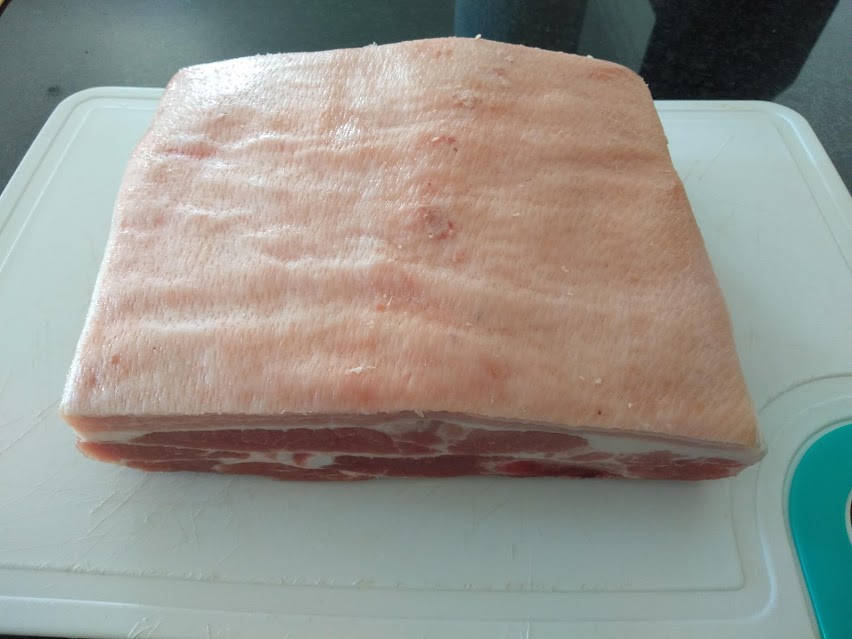
We were trying to stay authentic to the Greek tradition of how souvlaki is made and thus using pork. In choosing this meat, it meant that there were some (a lot) of cutting involved. Firstly, Berto removed the skin from the belly and then the bones.
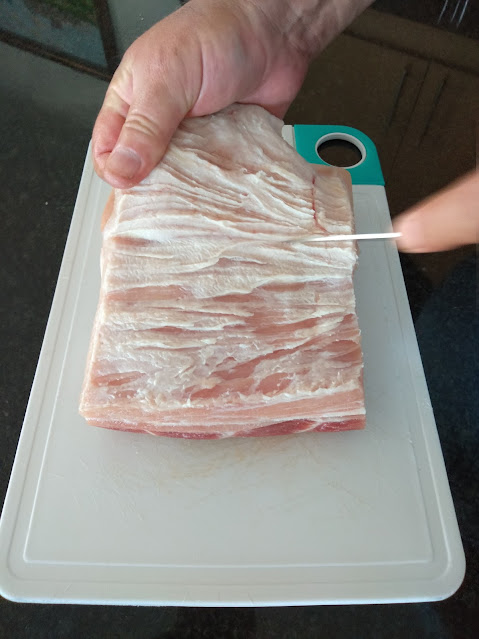
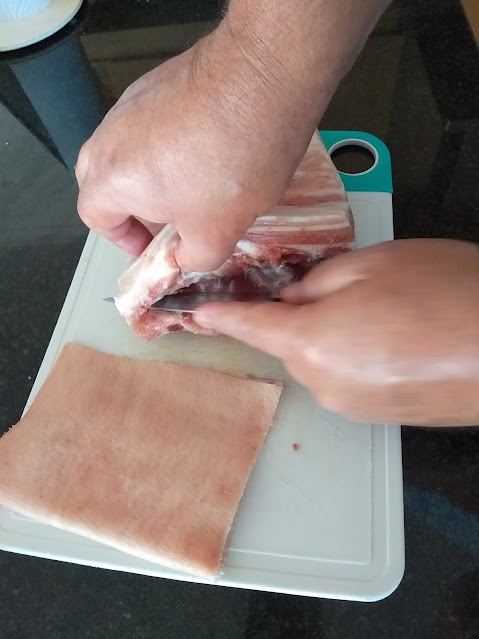
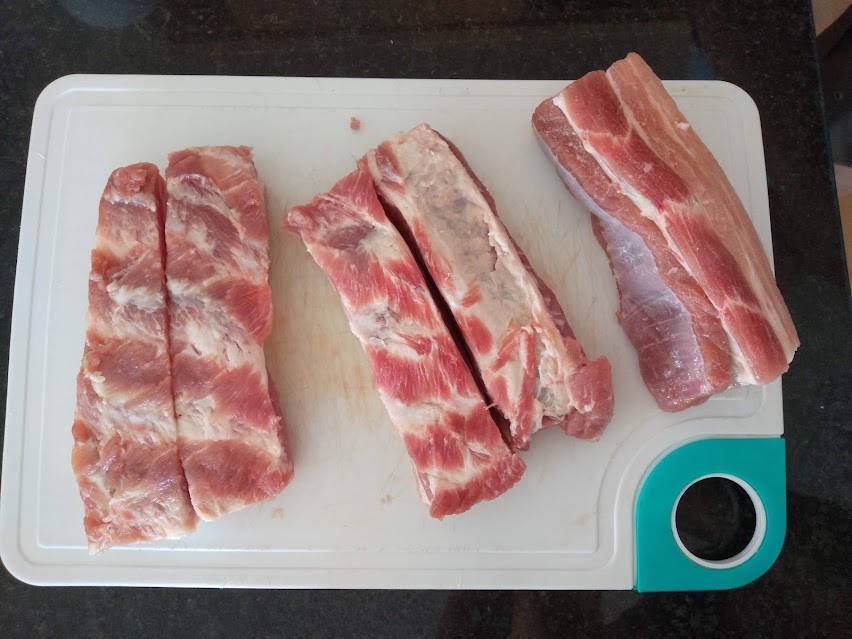

Although the meat looks quite fatty, it’s not the case after it’s been cooked on the fire. But if you prefer a leaner cut, pork fillet or neck will also work (or even lamb/chicken).
Berto then marinated the pork cubes in a mixture of olive oil, lemon juice, dried origanum, fresh black pepper and chopped onion.
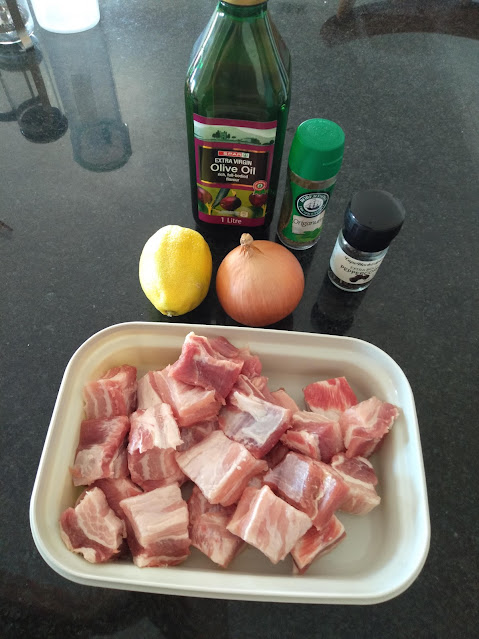

Pitas:
The pitas were made from a standard bread dough. After Berto kneaded the dough, he let it proof for 40 minutes. He then divided and formed it into balls and let it proof for another 15 minutes.
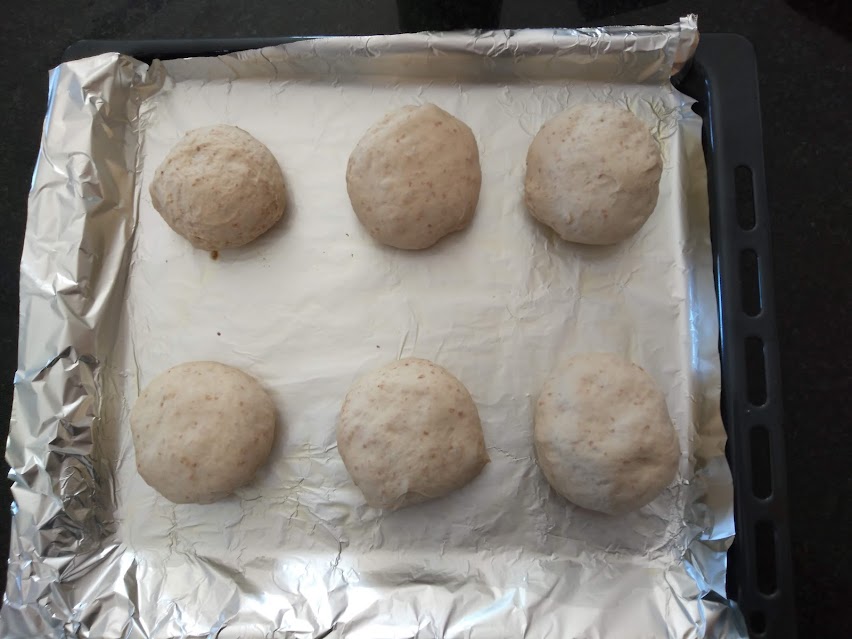
After rolling it out into 20cm size pitas, he fried it in a lightly oiled pan (on medium heat).
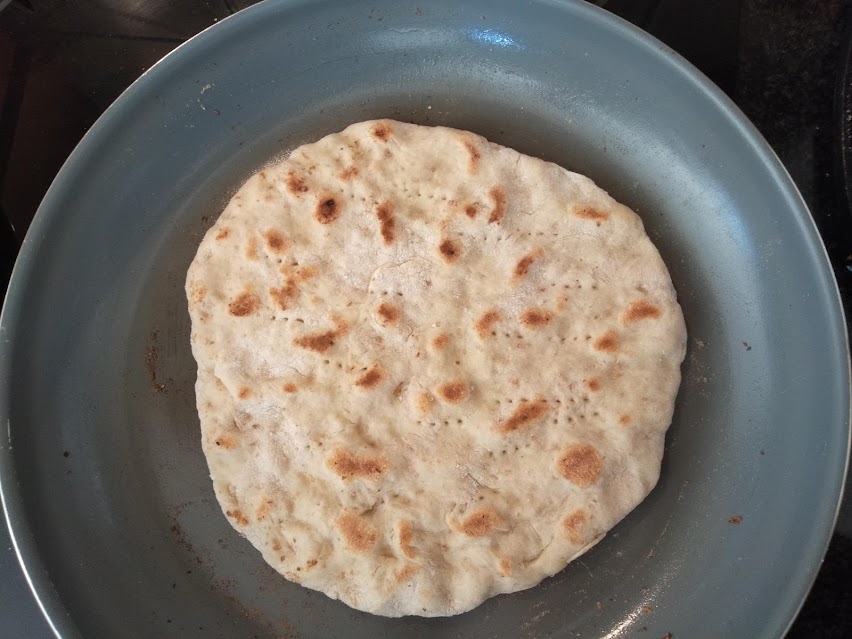
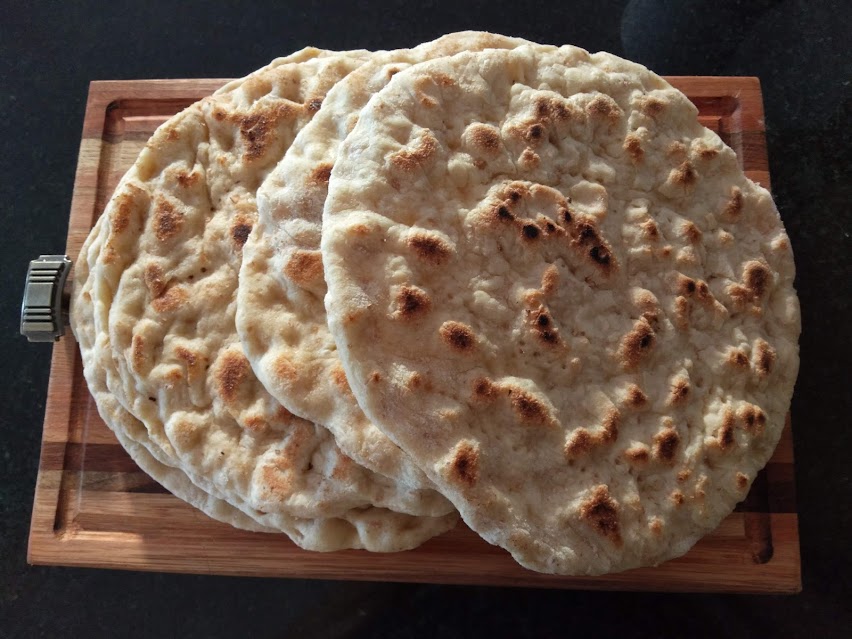
Tzatziki:
Tzatziki is a mild and subtle sauce. It is relatively creamy with a slight taste of garlic and cucumber – the perfect flavour to add to your souvlaki.
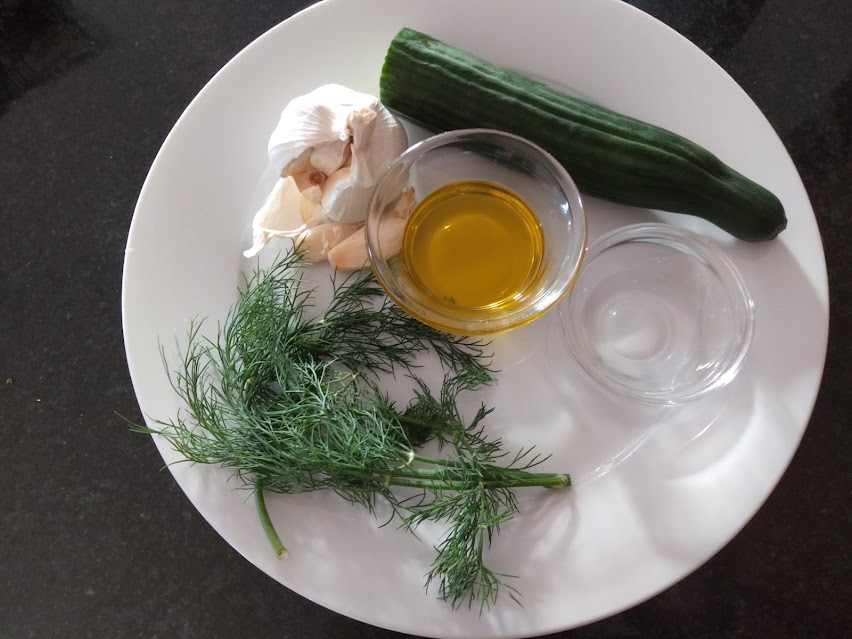
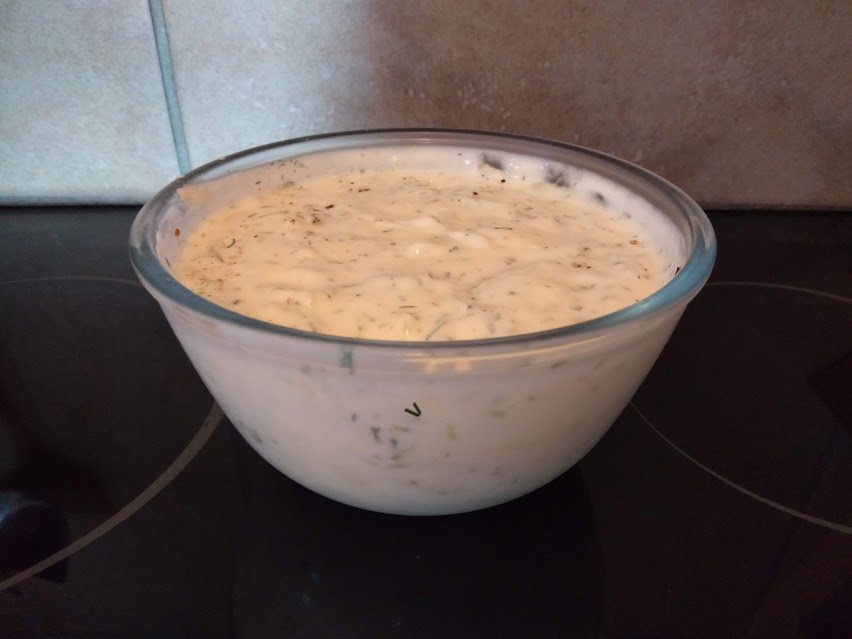
Final few steps:
After the pork cubes have marinated for an hour (or two), it’s time to start a fire.




With the skewered pork done, we dished it up on the pita together with sliced red onions and tomatoes and a dash of that delicious homemade tzatziki sauce.


This tasted just as good as the souvlaki we bought at Root 44. If you have some Greek music in the background, you might just think you’re in beautiful Greece!
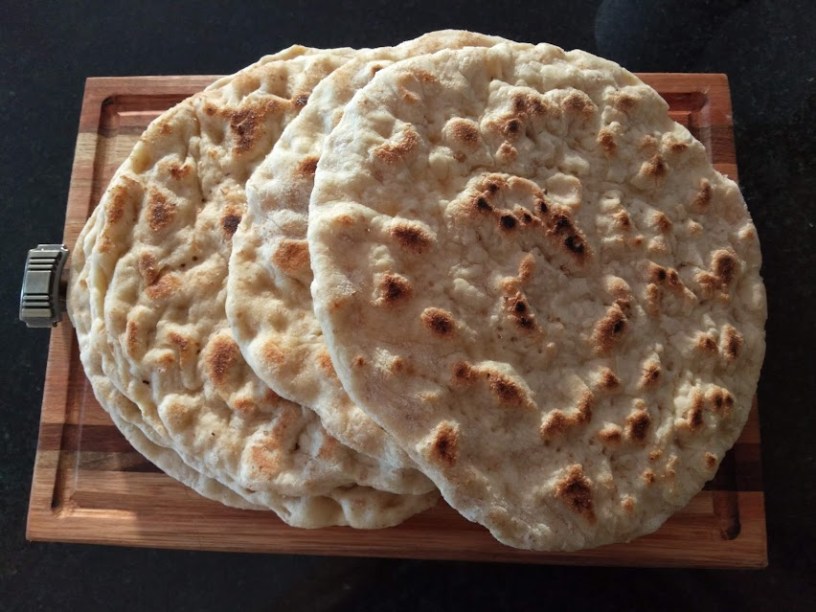
This looks FANTASTIC. Pork Belly is one of my favourite meats, so this was right up my street. Thanks for the share!
LikeLiked by 2 people
Oh yes, we love pork belly too!! Wait till you see what we did next with the pork belly on our camping trip … I think it probably tasted better than the souvlaki (did not think that was possible)!
LikeLiked by 1 person
Do you deliver?
LikeLiked by 2 people
Haha 😄 … you’re funny! I think you will find it more delicious when sitting with us around the fire …
LikeLike
That looks so good!
LikeLiked by 1 person
Thanks … it was certainly the meal of the week 😋.
LikeLike
Looks so yummy Corna. I’ve eaten this at Greek restaurants in the U.K. and love the flavours. Pork belly is a favourite cut of mine.
LikeLiked by 2 people
Absolutely, the flavours works great together in this particular dish Marion! Pork belly is a favourite of ours too – it’s quite versatile … in our next camping post you’ll see this popping up again 😉. Thanks once again for your comments, have a great weekend.
LikeLiked by 1 person
Nou is ek honger! Dit lyk so lekker Corna! Sal dit moet probeer!
LikeLiked by 1 person
Ek se altyd … as ek honger is, blaai ek net deur ‘n resepteboek (al die lieflike prentjies maak my vol … wel, vir daardie oomblik in elk geval 😉). Probeer dit gerus, dis ‘n verfrissende maaltyd en laat mens nie oorvol voel nie!
LikeLiked by 1 person
Sal dit beslis moet probeer! 😀
LikeLiked by 1 person
Glad to hear that your souvlaki turned out well. It looks delicious and I applaud your efforts to make everything by hand, including the pitas and the sauce. It’s amazing how food just tastes so much better cooked over the fire.
LikeLiked by 2 people
Thank you! Sometimes it asks for a little bit of effort to prepare homemade food … but it’s always worth it (and yes, even better on the fire 😄).
LikeLiked by 1 person
Yum yum yum
LikeLiked by 2 people
Haha 😄 … I’m telling you, this was a super-duper dinner!
LikeLike
Looks delish!
LikeLiked by 2 people
Thanks … I have a suspicion this may become a favourite meal 😉.
LikeLike
I’m impressed! I always liked food cooked on an open fire. That looks very professional. You have left me hungry again!
LikeLiked by 2 people
Thank you Carolyn 😊 … for me, this was quite easy (because I only took the ingredients out of the cupboards and made sure we have have the process captured on film – Berto was the one preparing everything)! It certainly was a great meal – so much so, that we took pork belly with us on our camping trip the following week. I hope you have eaten something in the meantime … 💌.
LikeLike
I love tzatziki and pita bread as well as souvlaki and since I now live in Cyprus, I’m close to what the wide range of Greek cuisine has to offer.
I never tried pork belly, (or maybe I did, without knowing it,) but honestly, for me it sound more like something I would cook for my dogs 😂
…and it looks too fatty so I would probably choose some leaner meat.
But, I really like and appreciate your detailed description of how the cooking takes place, step by step, both in words and excellent images.
Well done and for sure, tomorrow, when I stand at the meat counter to buy next week’s food, I’ll look extra closely at their pork bellies!!! 😁
LikeLiked by 2 people
You are really lucky to live close to Greek cuisine – we don’t just love souvlaki, but a wide variety of Greek food! Yes, I must admit that just the look of pork belly is maybe not that appetising, but when we stir a sauce together and put it over the fire, it really changes into a star dish.
Thank you for popping in and your lovely comments – I trust you will look with other eyes to pork belly from now on 😉.
LikeLike
This looks very similar to Shashlik – a skewered meat that is marinated in an acidic marinade and then grilled on an open fire. It’s very popular in Latvia and pretty much every family have a secret recipe on how to keep the meat moist and full of flavours. Thanks for sharing and have a good day 🙂 Aiva
LikeLiked by 2 people
Thanks Aiva, I’ve googled Shashlik … and you’re right, it looks very similar (and delicious)! I think I would love the food in Latvia 😊. Thanks for reading and your comments, enjoy the rest of your weekend 🌞.
LikeLiked by 1 person
Homemade souvlaki? Yes please! I love Greek food so much and I’m really excited to try this recipe now!
LikeLiked by 2 people
I was quite surprised when we tasted our homemade souvlaki … it came very close to the souvlaki we bought a couple of weeks ago! I hope you get to the kitchen soon and try it out. Have a great weekend, Corna 🌸.
LikeLiked by 1 person
You are such good cooks! I like pork belly Korean BBQ. I’m sure the souvlaki tasted amazing.
LikeLiked by 2 people
Oh John, we try 😉. Pork belly Korean BBQ … now you’re talking!! I’ve googled it and oh my, it looks really tasty (I love the flavours in Korean food and I can just imagine that this will be a great dish). Thanks for the tip!
LikeLiked by 1 person
With an 84-day trip around Greece and Greek islands last year, we ate a LOT of Souvlaki, so much so that we started comparing the slight differences in the different regions – and there were differences, but particularly in the tzatziki and the pitta rather than the seasoning of the pork. You look like you re-created the dish very well!
LikeLiked by 1 person
I was actually thinking about you guys who had such a great time in Greece when we were preparing our Souvlaki! Yes, we saw a few recipes for tzatziki where each one had something else in … but in the end, ours tasted really nice and we even enjoyed it over our cooked potatoes the next day as well. Maybe you can do a few Egyptian and Tunisian recipes when you’re back home again …
LikeLiked by 1 person
Wow looking delicious 😋! Pork belly 😋 thanks for sharing 🙂😊
LikeLiked by 1 person
It was really nice 😋, thank you. And I’m glad you enjoyed this post!
LikeLike
It’s my pleasure 😊💕
LikeLiked by 1 person
Wow, look at that perfect pita! I’ll bet this would be wonderful with eggplant, bell pepper, and onion, too. You’ve inspired me to work on my dough creations. (Gluten free flours are a bit challenging, and I’ve experienced lots of major fails!) Oh, you did a great job with the photos, too. Sometimes I cook without taking the time to photograph the different steps. Enjoy your Sunday! 🌞
LikeLiked by 1 person
Thank you Lisa! Oh yes, I think I was the most surprised at how great the pitas turned out 😉. I’m sure it can be equally as good when one is filling it with all those lovely vegetables. You know, I think it’s a bit easier when one person (Berto) is making the food while the other one is taking the photo’s (me) … we are a team after all on our blog. Hope you have a great Sunday too, take care 🌸.
LikeLiked by 1 person
I’m sure Berto’s homemade souvlaki tasted much better because he added the special ingredient ‘love’
LikeLiked by 1 person
Yes, you’ve got it spot on Henrietta 😁 … homemade and with love (that’s what make food just taste so much better)!
LikeLiked by 1 person
On my way!!!!! What a delicious meal. I have never cooked with pork belly but if I could find it I certainly would!
LikeLiked by 1 person
It is also a cut that we only recently discovered … and surprisingly, the meat is not all that fatty once Berto prepared it on the fire. In my next post (coming soon), we have used pork belly again in a different way (well, sort of – it’s still on a skewer – but with different ingredients and sauce) 😉.
LikeLike